Solar PV Projects Are Beyond Just Electricity Production
Wish you all a very Happy New Year 2023! Let this new year bring new hope to all of us and to our beautiful planet with more Solar PV Projects!
Solar PV energy projects do not just produce electricity; zero-carbon energy creates significant social, environmental, and commercial benefits in meeting multiple Sustainable Development Goals (SDGs).
Across the globe, almost daily a new application or business avenue is being opened with Solar PV projects which is the silver lining of tackling the climate change options by exploring Solar Energy. But policy measures cannot be overlooked here which may dampen the opportunities. The best example is India’s commitment to Solar PV projects. In 2014, India took a target of 100 GW of Solar PV capacity by the end of the year 2022 comprising of 60 GW for solar utilities (large-scale power plants) and 40 GW for rooftop solar. Over the years while the overall Solar industry has seen strong growth, the rooftop segment is the main reason behind the missed target which is shown in the chart right.
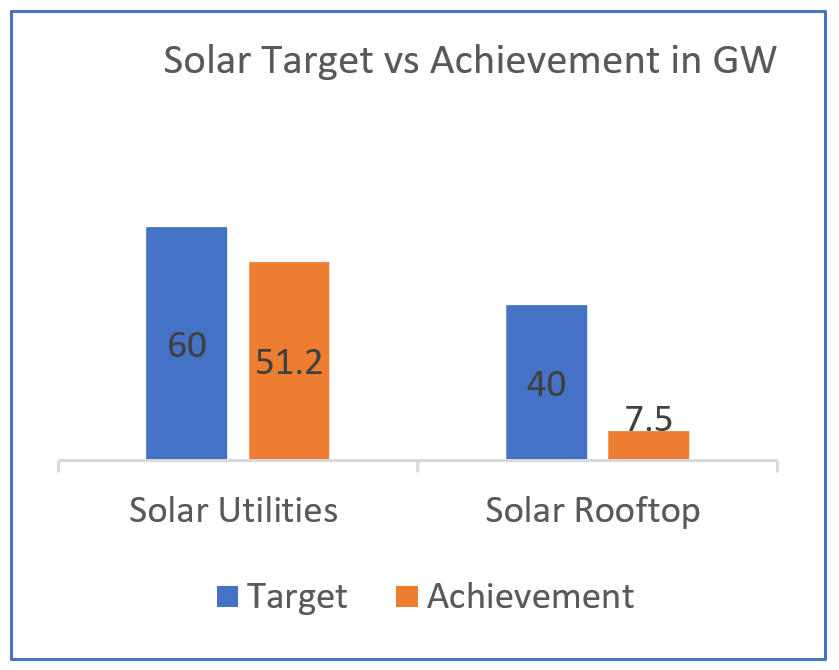
The major reasons for the shortfall of rooftop solar installation, inter-alia, include apprehension of possible revenue loss by DISCOMs, delay in getting approvals from different agencies, delay in installation of net/gross meters by DISCOMs, lack of uniform regulations, lack of awareness among the prospective beneficiaries, etc. These are mainly policy issues.
Again, the country is targeting about 280 GW by 2030 from Solar PV. This is very much attainable due to the multiple applications’ potential along with the proactive policy measures of the government.
Consumer behavior change is the key to any such initiatives. The Mission LiFE as mentioned by the government of India at the 2021 UN Climate Change Conference (UNFCCC COP26) to bring individual behaviors to the forefront of the global climate action narrative should be hoped for. With more than 300 sunny days on an annual average, India has huge potential for rooftop solar installations, particularly in the residential sector which is still not explored properly. The present trend of high tariffs along with the availability of subsidies, and net metering may drive the acceptance.
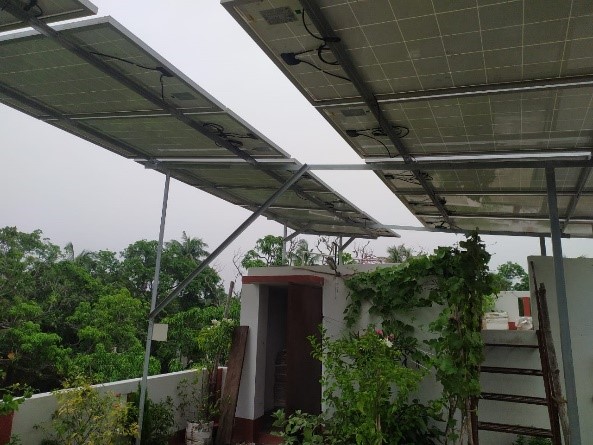
The Commercial and Industrial sector is expected to remain a big user of solar PV as it will not only reduce their energy cost but will also make them self-reliant on the energy front. Again, the usage of green energy will make them acceptable suppliers to the global players who are already committed to the climate goals. A number of cities in India still face power outages for a long duration; forcing the users to use the highly polluting and expensive Diesel Generator (DG) as backup power. Such establishments are looking for an alternative option using Solar PV. In the areas like Delhi NCR areas, the govt has enforced restrictions on to use of the DG to curb air pollution thereby making opportunities for more Solar PV power.
The Government of India has the plan to develop a ‘green city’ in every state of the country. The ‘green city’ will have solar rooftop systems on all its houses, solar parks on the city’s outskirts, waste-to-energy plants, and electric mobility-enabled public transport systems.
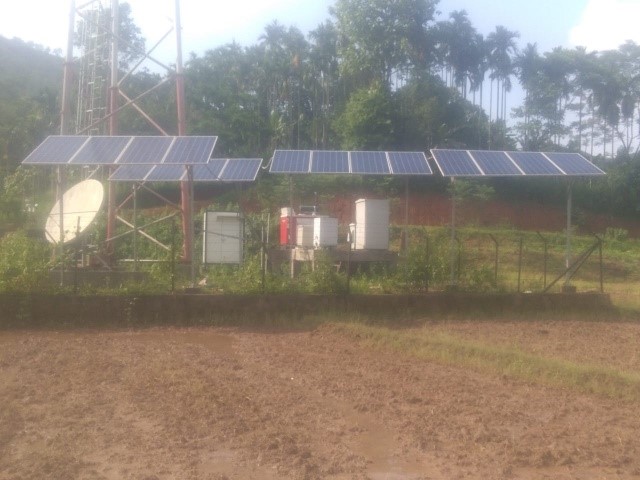
In February 2019, the ‘Kisan Urja Suraksha evam Utthaan Mahabhiyan’ (PM KUSUM) was launched with the objective of providing financial and water security to farmers. The proposed system consists of decentralized, ground-mounted, grid-connected renewable power plants, stand-alone solar-powered agricultural pumps, and the solarization of grid-connected solar-powered agricultural pumps. The related industries and cold storage are also exploring the usages of Solar PV Energy.
Solar PV-based hybrid systems offer a less polluting alternative to diesel fuel and help minimize the logistical challenges of transporting and storing diesel fuel at remote telecom tower sites. In addition, the government is planning to make it mandatory for cell towers to be powered by solar energy, in the hope of reducing pollution and curbing one of the main reasons for diesel consumption in the country.
The adjacent picture is Solar PV Plant in a Telecom Tower in Assam
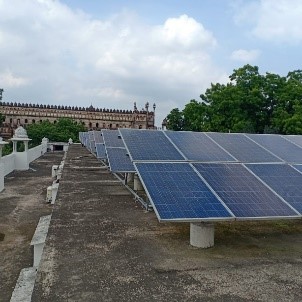
The colleges and university buildings are using solar energy to increase their responsiveness towards clean energy acceptance and get better NAAC (National Assessment and Accreditation Council) ratings as an institution.
The adjacent picture is a Solar PV Project in KGMU Lucknow
Indian Railways has a potential of 20 GW of solar power and is planning to utilize its vacant land to set up land-based solar plants for its traction power requirement. Under the off-grid and distributed solar PV program, the Ministry provides centralized financial assistance for the installation of solar streetlights, solar pumps, solar power packs, and other solar applications to meet the country’s electricity and lighting needs.
The High Impact Solar PV projects (meeting multiple SDGs) can be monetized further beyond the utilization of the solar power generated. There are corporates that have a commitment to the reduction of carbon emissions. One of the ways is through buying RECs (Renewable Energy Certificates) from eligible projects. There are many more Solar applications that cannot be covered in an article. But the message is clear Solar PV has the potential to meet multiple SDGs and the country’s commitment towards climate change.
References:
- https://www.teriin.org/article/solar-energy-indias-energy-security-reducing-variability-and-achieving-stability
- https://theprint.in/economy/indias-made-big-strides-on-renewable-energy-but-its-still-set-to-miss-2022-target-of-175-gw/1222231/
- https://www.niti.gov.in/life
- Government of India Planning a ‘Green City’ in Every State – The Wire Science


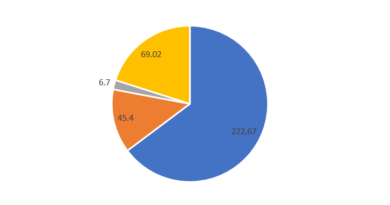
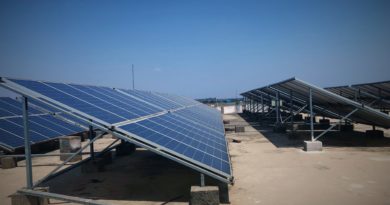
Very nice project
Intersted
Nice information